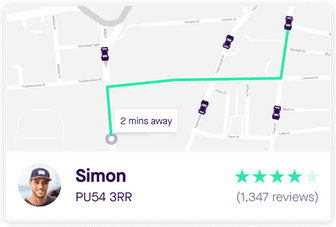
And formerly this year, MessageBird widened its horizons when it released Inbox, a cross-channel contact center platform which it promotes as the “Slack for external interactions.”
With Pusher under its wing, MessageBird gets rapid access to a plethora of APIs and SDKs which it will include under the new MessageBird Pusher brand name. That will allow the business to utilize service and designers in-app messaging functions, location-tracking tools, and push notices. If an ecommerce service wants to allow delivery vehicle drivers to message consumers, consumers to see the live area of their shipment chauffeur, and inform the customer when the shipment chauffeur next-door neighbors, MessageBird can assist.
Expanding its protection to more designer use cases makes a lot of sense for MessageBird, specifically as it has an existing lineup of prominent customers it can cross-sell and upsell to– it has a captive audience.
Cloud interactions business MessageBird has in fact gotten Pusher in an offer worth $35 million. Pusher allows designers to integrate real-time performances into their software application, including push notifications and in-app messaging.
As more organization shift to the cloud to increase their digital operations in 2020 and beyond, need for APIs will continue to grow In the previous 7 months alone, API advancement platform Postman raised $150 million at a $2 billion assessment, API market RapidAPI secured $25 million, and Skyflow locked down $17.5 million to bring its info personal privacy API to more services.
MessageBirds acquisition comes 2 months after it revealed a fresh $200 million in financing, valuing the Netherlands-based company at $3 billion, and enhances its platform ahead of a prepared IPO in 2021.
Omnichannel
Established out of Amsterdam in 2011, MessageBird was totally bootstrapped (and financially rewarding) prior to its very first significant round of financing in 2017. It has in fact produced an outstanding lineup of customers including Facebook, Uber, and SAP for a Twilio-like platform that allows app makers to consist of WhatsApp messaging, sms, email, and voice performance to their products through APIs. And formerly this year, MessageBird widened its horizons when it launched Inbox, a cross-channel contact center platform which it promotes as the “Slack for external interactions.”
With Pusher under its wing, MessageBird gets instantaneous access to a multitude of APIs and SDKs which it will include under the new MessageBird Pusher brand. That will permit business to utilize company and designers in-app messaging functions, location-tracking tools, and push notices. If an ecommerce business wants to allow delivery vehicle drivers to message customers, customers to see the live area of their shipment driver, and notify the customer when the delivery chauffeur next-door neighbors, MessageBird can help.
Above: Live location-tracking
MessageBird stated it was currently dealing with equivalent functions internally prior to it selected to obtain Pusher.” We were still early in the improvement treatment, and the Pusher platform and group have in fact allowed us to substantially speed things up,” CEO Robert Vis notified VentureBeat, consisting of that the brand-new functions will permit “more omnichannel usage cases” for its customers. To put it just, business require to deal with all the methods that customers anticipate to be supported in 2020, be that through real-time two-way chats, or details communicated proactively such as through location-tracking or push notifications
Above: Press( er) notifications.
Expanding its defense to more designer use cases makes a great deal of sense for MessageBird, specifically as it has an existing lineup of prominent customers it can cross-sell and upsell to– it has a captive audience. Additionally, at a time when many organization are hurrying to support the big around the world shift to digital driven by the around the world pandemic, it makes more sense than ever for MessageBird to strike while the iron is hot.
” COVID-19 and the scenario the world finds itself in has definitely had an impact [on its item roadmap], nevertheless more especially our consumers are seeing the worth of providing their consumers an omnichannel experience more than ever previously,” Vis specified. “We have actually seen more need for functions throughout the board, and the performance that Pusher gives our platform is no exception.”
The API economy
API-based platforms such as MessageBird and Pusher permit services to develop performances into their apps without requiring to establish the centers themselves, making it possible for organization such as Uber to use two-way interaction functions straight inside their apps. This type of innovation is important for services today, as customers expectations have in fact progressed from depending upon telephone interactions to using WhatsApp, web chat, or whatever interaction channel makes most sense.
The so-called “API economy” was currently a burgeoning pattern in the innovation sphere, as organization transitioned their software application from firmly woven, monolithic entities to applications built on microservices. Uber is a great example of this: It started a massive reword back in 2015 and relocated to service-oriented architecture (SOA), to “separate the monolith into several codebases,” as Uber bore in mind at the time.
Established out of London in 2010, Pusher had really raised around $20 million in financing because its beginning and presently has some popular consumers such as GitHub, DoorDash, and MailChimp. Business specified in spite of being taken in by MessageBird, it will continue as a standalone item and vowed to support all its existing consumers.
When It Comes To MessageBird, well, an IPO remains firmly on the program, though the business has yet to set a business date yet.
” Were still intending on 2021, and acquisitions like todays are supporting us on that journey,” Vis mentioned.






